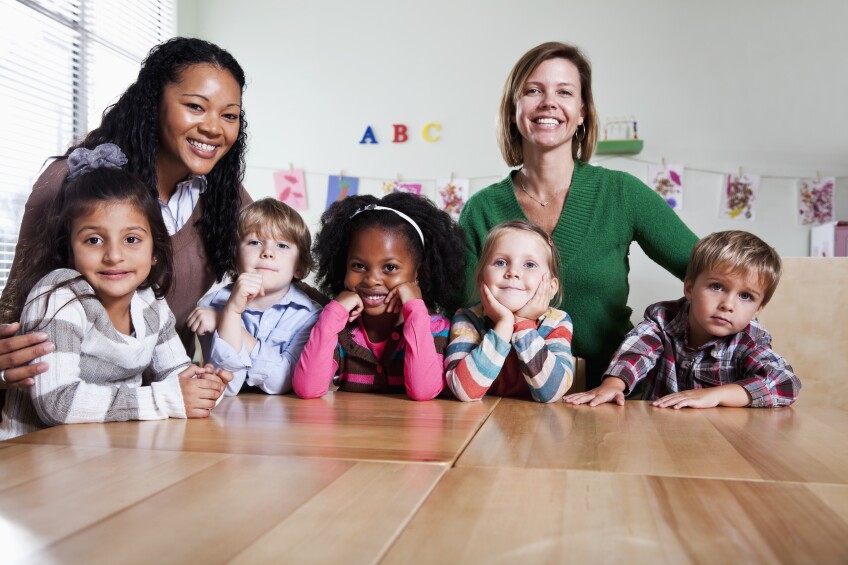3 Tips to Improve Accessibility and Fight Ableism in the Classroom

Before becoming an occupational therapist, I cared about people's differences, but I didn't see the world through a disability justice lens as I do now. I now understand how ableism, which is the discrimination against disabled people, is deeply rooted in many areas of life and requires us to unpack how it influences who we are and how we interact with the world.
At one point in my career, I realized that I am a neurodiverse person and started to reflect on what my childhood was like as a neurodiverse person who is different. This self-awareness opened up a new world for me. I now approach my differences and my loved one's differences with kindness and a willingness to understand them without jumping in to attempt to change who they are. As an educator, it's made me realize that working with children also means working with people who will be adults one day and no longer be under your care.
As an occupational therapist, I work directly with disabled children. My role is to assist my students in figuring out what areas of their lives they want to be independent in and strategize how we can get there. I use two approaches to make this happen:
- I employ various interventions to improve their physical, emotional and cognitive skills.
- I create modifications and accommodations. With this approach, we adapt or change an object or space in the hopes that those changes will allow the student to engage with it better.
In particular, there are three simple, meaningful changes to how I approach my work now that I wish I had done sooner. Below are my recommendations for educators to improve accessibility in the classroom.
1. Invest in Diverse Toys
In addition to being fun to play with, toys can also help children understand the world better.
Toys that consider children with disabilities are worth the extra effort to find them. Pretend play, for example, takes on a whole new meaning when the characters reflect all kinds of people, including disabled people. I believe that providing all kids (disabled or not) with toys that reflect diversity can also help them expand their awareness of people's different lived experiences. Here are a few toys and resources that you can purchase or make that represent some disabilities:
- Printable Coloring Pages of Disabled People
- DIY Wheelchair for a Doll
- Homemade persona dolls
- Barbie Fashionista Doll #121 with Brunette Hair and Prosthetic Leg- $9.89
- Barbie Fashionistas Doll #166 with wheelchair- $19.99
- Our Generation 18" Doll with Plush Guide Dog - Marlow - $29.99
- Enesco Sesame Street 14" Julia Character Plush - $30.99
- Cre8tive Friends with Diverse Abilities Figures - $41.99
- 15'' Limb Loss & Limb Difference Bear- $64.99
2. Question Design
When a space or object is developed with accessibility considerations, people with physical, intellectual/learning, psychiatric, visual, hearing and neurological disabilities find it easier to access or engage with it.
Unfortunately, our society was designed (and continues to be designed) for non-disabled people. This directly impacts disabled children, who have a desire to connect, play and engage in the world, just like everyone else. All children learn by interacting with their environment, so if their environment is inaccessible, the learning is hindered, making it even harder for them to participate in society.
Considering accessibility requires creativity, ingenuity, problem-solving and getting to know disabled people, including disabled children. As an advocate for disabled children, I question the design of everything and try to find ways to advocate for better design choices. This looks like educating the public on how natural spaces can be more accessible, spending time as an occupational therapist modifying what I can (toys, for example) and researching accessible community spaces where I can take my students. Unfortunately, not every disabled child receives occupational therapy, nor does every therapist have the capacity to modify or research everything.
3. Manage Relationships Differently to Fight Ableism
Neurodiversity is the idea that everyone's brain is different, which is entirely normal.
Although the concept has gained popularity and acceptance, society still tends to expect children to learn and socialize in a way that fits a set of rigid expectations. There is pressure for children, disabled or not, to learn everything they can before they are 21. At this age, they no longer receive as many services or opportunities as they once did. It is a huge transition that brings fear and confusion to everyone involved, including the child. I often ask myself, "How do I prepare my students for a world that doesn't acknowledge them?" The answer lies in unpacking ableism, the discrimination against disabled people due to the belief that neurotypical individuals are superior. With this in mind, I have radically changed how I manage relationships with myself, my students and my loved ones. I believe this change has created a ripple effect by directly influencing the people in my life to help unpack ableism.
I hope to live in a world where we have all taken the time to do this work. I encourage everyone, regardless of their industry, to research accessibility and question whether there are things they engage with every day that could be improved.
The following resources are a helpful start to understanding ableism:
- Anti-Ableism Resources
- "You Do Not Exist To Be Used": Why Your Life Purpose Is Bigger Than Capitalist Productivity
- Disability and Anti-Ableism Books For Children
- What You Should Tell Your Kids About People With Disabilities
- Supporting Your Child with Disabilities with Digital Learning Games
- How Media Can Positively Impact Children's Perceptions of Autism



